|
3rd Battalion Royal Australian Regiment
Your FaithfullyJapan - Korea - Malaya - Borneo - Vietnam - East Timor - Solomons - Iraq - Afghanistan |
3rd Battalion Royal Australian Regiment 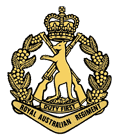 Battlefield Korea |
||||||||||||||||||||||||||||||||||||||||||||||||||||||||||||||||||||||||||||||||||||||||||||||||||||||||||||||||||||||||||||||||||||||||||||||||||||||||||||||||||||||||||||||||||||||||||||||||||||||||||||||||||||||||||||||||||||||||||||||||||||||||||||||
1950 - 1951 |
||||||||||||||||||||||||||||||||||||||||||||||||||||||||||||||||||||||||||||||||||||||||||||||||||||||||||||||||||||||||||||||||||||||||||||||||||||||||||||||||||||||||||||||||||||||||||||||||||||||||||||||||||||||||||||||||||||||||||||||||||||||||||||||
Part 1 - Index & Preface |
||||||||||||||||||||||||||||||||||||||||||||||||||||||||||||||||||||||||||||||||||||||||||||||||||||||||||||||||||||||||||||||||||||||||||||||||||||||||||||||||||||||||||||||||||||||||||||||||||||||||||||||||||||||||||||||||||||||||||||||||||||||||||||||
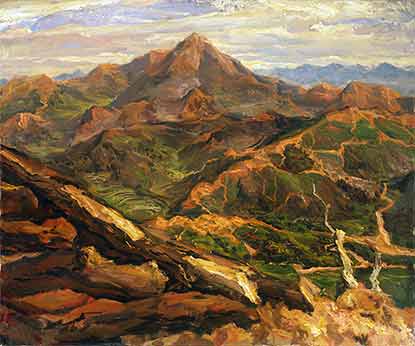 |
||||||||||||||||||||||||||||||||||||||||||||||||||||||||||||||||||||||||||||||||||||||||||||||||||||||||||||||||||||||||||||||||||||||||||||||||||||||||||||||||||||||||||||||||||||||||||||||||||||||||||||||||||||||||||||||||||||||||||||||||||||||||||||||
Hill 317, Oil on canvas, 1952 by Ivor Hele. Also known as Maryang San, this hill was captured by 3rd Battalion, Royal Australian Regiment in October 1951. [AWM ART40314] ... |
||||||||||||||||||||||||||||||||||||||||||||||||||||||||||||||||||||||||||||||||||||||||||||||||||||||||||||||||||||||||||||||||||||||||||||||||||||||||||||||||||||||||||||||||||||||||||||||||||||||||||||||||||||||||||||||||||||||||||||||||||||||||||||||
 |
||||||||||||||||||||||||||||||||||||||||||||||||||||||||||||||||||||||||||||||||||||||||||||||||||||||||||||||||||||||||||||||||||||||||||||||||||||||||||||||||||||||||||||||||||||||||||||||||||||||||||||||||||||||||||||||||||||||||||||||||||||||||||||||
BATTLEFIELD KOREA |
||||||||||||||||||||||||||||||||||||||||||||||||||||||||||||||||||||||||||||||||||||||||||||||||||||||||||||||||||||||||||||||||||||||||||||||||||||||||||||||||||||||||||||||||||||||||||||||||||||||||||||||||||||||||||||||||||||||||||||||||||||||||||||||
The Korean Battle Honours of The Royal Australian Regiment 1950 - 1953 |
||||||||||||||||||||||||||||||||||||||||||||||||||||||||||||||||||||||||||||||||||||||||||||||||||||||||||||||||||||||||||||||||||||||||||||||||||||||||||||||||||||||||||||||||||||||||||||||||||||||||||||||||||||||||||||||||||||||||||||||||||||||||||||||
 |
||||||||||||||||||||||||||||||||||||||||||||||||||||||||||||||||||||||||||||||||||||||||||||||||||||||||||||||||||||||||||||||||||||||||||||||||||||||||||||||||||||||||||||||||||||||||||||||||||||||||||||||||||||||||||||||||||||||||||||||||||||||||||||||
Index and Preface (Part One) |
||||||||||||||||||||||||||||||||||||||||||||||||||||||||||||||||||||||||||||||||||||||||||||||||||||||||||||||||||||||||||||||||||||||||||||||||||||||||||||||||||||||||||||||||||||||||||||||||||||||||||||||||||||||||||||||||||||||||||||||||||||||||||||||
Contents |
||||||||||||||||||||||||||||||||||||||||||||||||||||||||||||||||||||||||||||||||||||||||||||||||||||||||||||||||||||||||||||||||||||||||||||||||||||||||||||||||||||||||||||||||||||||||||||||||||||||||||||||||||||||||||||||||||||||||||||||||||||||||||||||
|
||||||||||||||||||||||||||||||||||||||||||||||||||||||||||||||||||||||||||||||||||||||||||||||||||||||||||||||||||||||||||||||||||||||||||||||||||||||||||||||||||||||||||||||||||||||||||||||||||||||||||||||||||||||||||||||||||||||||||||||||||||||||||||||
A great many people helped in the compilation of this book-including the actual combatants. However, I would like to thank the following individuals and organisations without whose assistance this volume would not have reached the presses:
- Roger Lee, Head of the Army History Unit, for sponsoring this publication. |
||||||||||||||||||||||||||||||||||||||||||||||||||||||||||||||||||||||||||||||||||||||||||||||||||||||||||||||||||||||||||||||||||||||||||||||||||||||||||||||||||||||||||||||||||||||||||||||||||||||||||||||||||||||||||||||||||||||||||||||||||||||||||||||
It has been an honour and a labour of love to examine once more the magnificent war histories by Robert O'Neill and Bob Breen and others mentioned below. While no book can really acknowledge the courage, determination and mateship of the Australian infantryman in Korea, these go a long way towards doing so. Battlefield Korea is a modest attempt to gild what is already quite a spectacular lily. This volume was prepared from the Battle Honours records held by the Australian Army's Directorate of Infantry. The maps and references were taken from Robert O'Neill's war history. The citations were reproduced from photocopies of citations held in the Australian War Memorial which were then digitally reproduced. This was a painstaking process. There are currently no digital records of Australian citations for the Korean War held by the Australian War Memorial or other known sources. Citations are prepared in the field by clerks at battalion headquarters, under hazardous conditions and using various abbreviations, spellings, pencilled corrections and grammatical constructions, depending on the clerical staff available. Rather than duplicating these citations as written, I have taken the liberty of standardising format, abbreviations, grammatical construction and spelling to facilitate the understanding of these events by the non-military reader. I have taken the same liberty also with the Battle Honours of the Regiment. The content and implicit meaning of the honours and citations have not been changed |
||||||||||||||||||||||||||||||||||||||||||||||||||||||||||||||||||||||||||||||||||||||||||||||||||||||||||||||||||||||||||||||||||||||||||||||||||||||||||||||||||||||||||||||||||||||||||||||||||||||||||||||||||||||||||||||||||||||||||||||||||||||||||||||
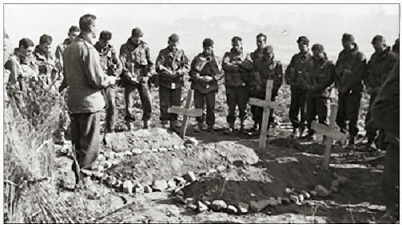 |
||||||||||||||||||||||||||||||||||||||||||||||||||||||||||||||||||||||||||||||||||||||||||||||||||||||||||||||||||||||||||||||||||||||||||||||||||||||||||||||||||||||||||||||||||||||||||||||||||||||||||||||||||||||||||||||||||||||||||||||||||||||||||||||
| Australian soldiers stand solemnly around the graves of three of
their mates as a funeral service is performed.
(AWM HOBJ1650) |
||||||||||||||||||||||||||||||||||||||||||||||||||||||||||||||||||||||||||||||||||||||||||||||||||||||||||||||||||||||||||||||||||||||||||||||||||||||||||||||||||||||||||||||||||||||||||||||||||||||||||||||||||||||||||||||||||||||||||||||||||||||||||||||
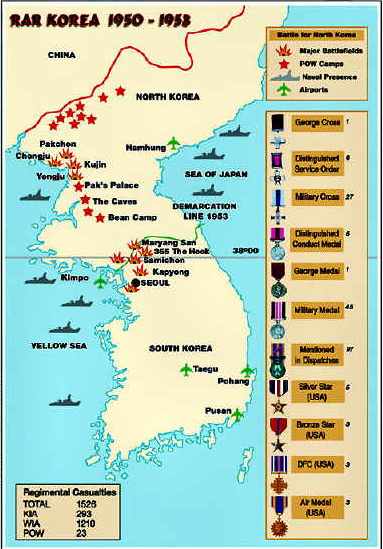 |
||||||||||||||||||||||||||||||||||||||||||||||||||||||||||||||||||||||||||||||||||||||||||||||||||||||||||||||||||||||||||||||||||||||||||||||||||||||||||||||||||||||||||||||||||||||||||||||||||||||||||||||||||||||||||||||||||||||||||||||||||||||||||||||
The Korean Peninsula 1950 - 9153 |
||||||||||||||||||||||||||||||||||||||||||||||||||||||||||||||||||||||||||||||||||||||||||||||||||||||||||||||||||||||||||||||||||||||||||||||||||||||||||||||||||||||||||||||||||||||||||||||||||||||||||||||||||||||||||||||||||||||||||||||||||||||||||||||
The Korean War does not deserve to be forgotten. It was such a significant struggle, the first great showdown between communism and democracy, and one that provoked a real risk of nuclear conflict between east and west. Yet for all its huge dimensions, for all its awful toll of casualties, for all its grand theatre-think of the drive to the Yalu River, the surprise involvement and winter advance of the Chinese army, the sacking of Macarthur-the truth is that it failed to make a lasting impact on the consciousness of the outside world. It seems to have been an easy war to forget, unless of course you were there. Not only has Korea been branded with a label that has become a cliché: the 'Forgotten War'; it has become a victim of neglect, by comparison with other wars, in popular culture and even in military history. The Vietnam conflict overshadowed it totally in those terms, managing to spawn large numbers of fine novels, histories and movies which examined the agony of the battlefield and the divisions it caused, particularly in middle America. Graham Greene's The Quiet American, David Halberstam's The Making of a Quagmire, Francis Ford Coppola's Apocalypse Now are just three examples of the genre, all enduring cultural monuments to a most unpopular war. And Korea? Some excellent histories and memoirs, official and personal, have been published-but to quite modest readerships. No films or novels of consequence emerged from the war. Only the television comedy show M.A.S.H. might be said to have penetrated the popular awareness barrier, and for all its fierce satire it hardly did justice to the harshness of that conflict. Why the neglect? Somehow the Korean War seemed to invite it. It was a lonely, thankless, unromantic war, fought in a remote corner of the globe, so soon after World War II that some saw it as a sad little echo. It ended after three years in unsatisfactory stalemate, after the United Nations had suffered 142,000 casualties and a million Korean people were dead. It had no living-room audience, having pre-dated live long-range television in the United States and Britain-and any kind of television in Australia. It provoked no great moral outrage or protest, probably because of its raw beginnings: the North Korean regime had begun the war with an act of ruthless aggression. In Australia there were no peace marches, no anti-war demonstrations, no arguments about conscription-which wasn't surprising since all the Australian combatants were volunteers. The troops went away in small batches, and when they came home there was no great sense of triumph, no visible outpouring of national pride. The war was accepted as just something that happened, and nobody seemed to care too much. Although it cost 1,584 casualties among Australian servicemen, with 340 dead, its memory has been allowed to slumber. All of this makes the publication of this book and the realisation of its primary purpose-to recognise and document the Battle Honours of the Royal Australian Regiment at that time and the individual acts of courage by its soldiers-most welcome. Battlefield Korea casts fresh light on that sadly unremembered conflict and the part young Australians played in it. To read it is to feel proud. The author has assembled the citations of the twelve Battle Honours from the thousands of encounters from the Yalu to Pusan and back, Kapyong, Kowang San, Maryang San and The Samichon as well as those of the ninety-nine soldiers who received imperial and American awards for bravery; he has also included the list of the ninety-seven others who were mentioned in dispatches. It has been a painstaking process, an obvious labour of love, and there is about the citations themselves a remarkable freshness, a battlefield authenticity. Obviously, this is a book about heroism, and some of the acts of heroism chronicled here are truly awesome. By their nature they belie comparative assessments; all of the Battle Honours encapsulate the courage, determination and mateship of the Regiment in battle, but some of the decorations possess a singularity that separates them from others. Captain Henry Nicholls, a company commander, became the only officer in the regiment to win a second Military Cross; Sergeant William Rowlinson, in charge of a platoon, received the Regiment's only bar to the Distinguished Conduct Medal; and Private Albert White, a Bren gunner, was the only soldier to win a second Military Medal. Private Horace Madden was awarded a posthumous George Cross, the only one given to the Regiment, for his selflessness and consistent bravery as a prisoner of the Chinese. Sergeant Tom Murray, a drum major when he wasn't in battle, received a George Medal-again the only one issued to the regiment-after he dived into icy cold, deep water from the Broken Bridge at Pakchon to rescue a wounded stretcher patient. It sounds so simple, that last sentence. But it really doesn't do Murray's behaviour justice. I was privileged to serve with 3 RAR as a war correspondent during the punishing winter of 1950-51, and happened to be in the vicinity that night. Murray had first demonstrated great courage during the battle that took place across the river, tending wounded under fire; then later he supervised the evacuation of wounded across the bridge, which had a collapsed span. Unable to take his stretcher cases up the makeshift ladder that troops had scaled on the way across, he rigged up a pulley system that enabled his team to tow relays of casualties in a small boat across the water, which was flowing swiftly, rising fast and quite freezing. As he did so he was exposed again to sniper fire. Later, when the boat grazed a pylon and sank, tipping out a serious stretcher case, he plunged into the river and hauled the wounded man around fifteen metres to safety. Neither man could have lasted much longer in that water. After treatment for exposure, Murray returned to duty. So many examples of bravery recorded in the book were of such a nature. They were performed in a context of almost instinctive behaviour that the principals thought was normal-nothing more than they were expected to do-but which was, in fact, truly inspirational. The author and editors are to be commended on their compilation of this volume. It is a significant contribution to the records of Australians at war, and particularly to the proud history of the Royal Australian Regiment. It also serves another fine purpose: it shines a small torch in a dark corner and, in doing so, hopefully makes the Korean War just a little less forgotten. Harry Gordon, CMG, AM |
||||||||||||||||||||||||||||||||||||||||||||||||||||||||||||||||||||||||||||||||||||||||||||||||||||||||||||||||||||||||||||||||||||||||||||||||||||||||||||||||||||||||||||||||||||||||||||||||||||||||||||||||||||||||||||||||||||||||||||||||||||||||||||||
Harry Gordon is an award-winning journalist, editor, author and historian. At the age of twenty-four he was a war correspondent in Korea, accompanying the Royal Australian Regiment through the advance to the Yalu River and the retreat, which followed the Chinese Army's entry into the war. In 1960 he covered the Algerian civil war. He held senior posts in newspapers, as editor of the Melbourne Sun, and later as editor-in-chief of two major groups, The Herald and Weekly Times and Queensland Newspapers, and chairman of Australian Associated Press. He has written thirteen books, and is a winner of the National Book Council's first prize for Australian literature. He is official historian for the Australian Olympic Committee, and has been awarded the International Olympic Committee's highest individual distinction: the Olympic Order. We are proud to have him associated with this publication. |
||||||||||||||||||||||||||||||||||||||||||||||||||||||||||||||||||||||||||||||||||||||||||||||||||||||||||||||||||||||||||||||||||||||||||||||||||||||||||||||||||||||||||||||||||||||||||||||||||||||||||||||||||||||||||||||||||||||||||||||||||||||||||||||
The full story of the war correspondents in Korea has yet to be told. Harry Gordon was one of the first to accompany Australian troops and the youngest of the group. The other early newspaper correspondents with the Regiment in Korea during that first harsh winter were all seasoned veterans of war. They were: Ronald Monson, who had covered conflicts in Abyssinia, Spain and China before World War II; the former commando officer Alan Dower; and Lawson Glassop, author of We Were the Rats. Des Telfer, who had been a pilot in World War II, represented the ABC. Correspondents who served later with the Regiment in Korea included Ian McCrone, Ian Reid, Mike Ramsden, Charles Madden, Hal Richardson, Norman MacSwan and John Ulm. Harry and his comrades all served with distinction in dangerous and difficult times. They were classified as non-combatants, but their attachment to an infantry battalion ensured that they saw plenty of action. In an era before television and satellite communications, these men were the eyes and ears of the Australian public. It is sobering to recall that among the first Australians killed in action was the correspondent Derek Pearcy, formerly of the Sydney Daily Telegraph, then representing Reuters news agency. I often think about Mike Ramsden, then representing the Sydney Telegraph (and later a television news director with Channel Seven), bringing up a few bottles of beer, as he'd join me in my hutchi for the day. Charles Madden, as I recall, had a rare collection of vulgar but very appropriate rugby songs. These cheered our days in reserve. I reflected even then, as I do now, that I had to be up there at the sharp end ...those fellows didn't. |
||||||||||||||||||||||||||||||||||||||||||||||||||||||||||||||||||||||||||||||||||||||||||||||||||||||||||||||||||||||||||||||||||||||||||||||||||||||||||||||||||||||||||||||||||||||||||||||||||||||||||||||||||||||||||||||||||||||||||||||||||||||||||||||
| "Let us remember three facts. First, all wars are won in the end by the infantryman. Secondly, the infantryman always bears the brunt. Thirdly, the art of the infantryman is less stereotyped and far harder to acquire in modern war than that of any other arm." British Army Field Service Regulations of 1925 |
||||||||||||||||||||||||||||||||||||||||||||||||||||||||||||||||||||||||||||||||||||||||||||||||||||||||||||||||||||||||||||||||||||||||||||||||||||||||||||||||||||||||||||||||||||||||||||||||||||||||||||||||||||||||||||||||||||||||||||||||||||||||||||||
 |
||||||||||||||||||||||||||||||||||||||||||||||||||||||||||||||||||||||||||||||||||||||||||||||||||||||||||||||||||||||||||||||||||||||||||||||||||||||||||||||||||||||||||||||||||||||||||||||||||||||||||||||||||||||||||||||||||||||||||||||||||||||||||||||
On cessation of hostilities in 1945 the Australian Government made a commitment to contribute Australians to the Commonwealth Occupational Forces in Japan. The 34th Infantry Brigade was raised in Morotai, specifically for this purpose, and consisted of three infantry battalions, namely the 65th 66th and 67th Battalions. On 23 November 1948 the 34th Infantry Brigade was designated as the Australian Regiment, with the battalions becoming the 1st, 2nd and 3rd Battalions, The Australian Regiment. On 10 March 1949 Royal assent was given and the Regiment became The Royal Australian Regiment. The newly formed Regiment subsequently fought with distinction in Korea for three years in all phases of conventional warfare. This was the last occasion on which it was so deployed. The nature of war changed dramatically with the arrival of counterinsurgent and terrorist operations in Asia. However the spirit of the soldiers did not change. Throughout operations in Malaya, Borneo, Vietnam, Iraq, Timor, Afghanistan and all points north of our homeland, the children and grandchildren of those Korean veterans still carried the flag of mateship, initiative and courage forged so splendidly, so long ago, at Gallipoli and those far away countries. These conflicts are now emblazoned on our Regimental Battle Honours. |
||||||||||||||||||||||||||||||||||||||||||||||||||||||||||||||||||||||||||||||||||||||||||||||||||||||||||||||||||||||||||||||||||||||||||||||||||||||||||||||||||||||||||||||||||||||||||||||||||||||||||||||||||||||||||||||||||||||||||||||||||||||||||||||
It was on 25 June 1950, on a sultry summer's day in another century, that a horde of North Korean troops swept across the 3 8th parallel-without warning or declaration- against a peaceful South Korean community. Within three days the capital, Seoul, had fallen. This was an immediate threat to the sovereignty of the South Korean nation and to the stability of the world. The next day, 26 June, the President of the United States, Harry S. Truman, ordered American forces to repel any invasion attempt by the Chinese Communist forces. On the afternoon of 27 June, the United Nations Security Council in New York resolved that its members should assist South Korea to restore peace. The first Australian participation in the Korean War was airborne: RAAF operations commenced on 2 July 1950. The Naval contribution quickly followed when HMAS Shoalhaven set sail on 7 July 1950. The Army component deployed on 27 September 1950 when the 3rd Battalion, The Royal Australian Regiment (3 RAR), left the British Commonwealth Occupation Forces (BCOF), Japan, and embarked on the Aiken Victory heading for the southern Korean port of Pusan. Ultimately twenty-one other countries came to the aid of the South Koreans. It was the first real test of the United Nations' resolve. These were perilous times for the world in the midst of a bitter international Cold War. The United States, USSR, United Kingdom and the Chinese Republic were poised for battle-apparently on the brink of a third world war. Fortunately, due to the timely action of the United Nations and the courageous efforts of the allied and Australian troops within Korea, this was not to be. However a bitter localised battle raged throughout the Korean peninsula for some three years. The effects of the war in Korea were both global and local. Globally, the war spelt an end to the political stalemate between Russia and China and marked a return to conciliation with the United Nations in the quest for world peace. For the citizens of Korea it meant a bitter civil war-family against family, friend against friend-resulting in the deaths of some three million men, women and children. On the other hand, South Korea was saved from occupation and developed into a vital and prosperous new democratic nation. While direct combat operations ceased on 27 July 1953, a state of war between the North and the South continues to this day. For Australia it meant the deployment of over 17,000 troops-sailors, soldiers, airmen, and nurses-a significant and meaningful commitment for so small a population. With that deployment also came international recognition of Australia as an active member of the United Nations and a participant in world affairs. It was not the first time that Australia had come to protect its national interests outside its own borders. The cost to Australia was immense. The Australian forces suffered 1,585 casualties: 340 killed in action; 1,216 wounded; and 29 taken prisoner. For others the cost was equally great: |
||||||||||||||||||||||||||||||||||||||||||||||||||||||||||||||||||||||||||||||||||||||||||||||||||||||||||||||||||||||||||||||||||||||||||||||||||||||||||||||||||||||||||||||||||||||||||||||||||||||||||||||||||||||||||||||||||||||||||||||||||||||||||||||
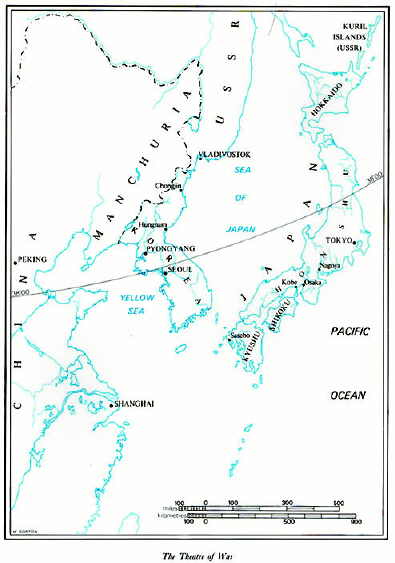 |
||||||||||||||||||||||||||||||||||||||||||||||||||||||||||||||||||||||||||||||||||||||||||||||||||||||||||||||||||||||||||||||||||||||||||||||||||||||||||||||||||||||||||||||||||||||||||||||||||||||||||||||||||||||||||||||||||||||||||||||||||||||||||||||
For our young regular army and our K Force diggers, it was a difficult and costly battle, not only against a numerically superior enemy, but in an extremely hostile climate and terrain. Australia's infantry soldiers fought on the slopes of massive, rocky mountains, in paddy fields and rivers. Many battles were fought in the open, our troops protected only by bunkers and pits in the ground. The climate was another enemy: suffocating heat and disease in the summers and frigid, bone-chilling sub-zero temperatures and frostbite in the winters. It was tough in the field where soldiers lived with the sky for a roof, a rock for a kitchen and a dugout for a bed. At the start of its campaign, the Regiment was inadequately provisioned and supported, and thrown into battle with American and British troops with operational urgency. The demand for courage, military skill and morale from the Regiment's soldiers was extraordinary. As in the past, the diggers, with their own unique brand of mateship, bravery and determination, overcame the extraordinary obstacles hurled at them by the Korean War and established a battlefield record second to none. The magnificent trio, Battalions 1, 2 and 3 of The Royal Australian Regiment, was born and blooded in this environment. The battles of the Korean War are now legendary. From the frantic mobile advances to the Yalu and, later, the withdrawal, Sariwon, the Apple Orchard, the Broken Bridge, Pakchon, Salmon and Sardine to the heroic stand at Kapyong. From the magnificent Operation Commando assault at Kowang San 355, Maryang San 317 and The Hinge to the dogged defence and punishing patrols of the Static War on 355, 227, 210, Blaze, Fauna, Flora, Buffalo, Songgok, and The Hook, the Regiment paid the price with 1,536 casualties: 303 killed, 1, 210 wounded, and 23 prisoners of war. Yet these soldiers forged a reputation with their United Nations allies which remains unchallenged today. The kin of the veterans of the first and second world wars and subsequent operations maintained the finest Australian fighting tradition. Korea, as an extended campaign, is unique to the Regiment. It was the first battle engagement for the newly formed Regiment and it was the first and last time since World War II that the battalions engaged in large-scale conventional warfare. The detailed skills and tactics of the various phases of war in contrasting terrain and climate tested the mettle of the newly formed Regiment. These skills remain the foundation of the very different operations of today which are conducted with the same measure of success. All three battalions of the Regiment, 1 RAR, 2 RAR and 3 RAR, served in Korea: |
||||||||||||||||||||||||||||||||||||||||||||||||||||||||||||||||||||||||||||||||||||||||||||||||||||||||||||||||||||||||||||||||||||||||||||||||||||||||||||||||||||||||||||||||||||||||||||||||||||||||||||||||||||||||||||||||||||||||||||||||||||||||||||||
| A total of 10,840 Australian Army soldiers served in Korea. Most of these were from the Regiment. Members of the Regiment were honoured with 99 awards and 97 Mentioned in Dispatches, including 85 Imperial decorations and 14 United States foreign awards. The Regiment itself was awarded 12 Battle Honours. Over the period September 1950 to July 1953 the Regiment was in constant contact with the enemy, conducting infantry operations of an epic proportion. The story of military skill, mateship, courage and determination expressed in these citations is now enshrined in Regimental history. Battle HonoursMaehwa San * Kapyong * Kowang San * The Samichon * Maryang San
These proud regimental achievements are honoured on the Regimental Colours as the Battle Honours. |
||||||||||||||||||||||||||||||||||||||||||||||||||||||||||||||||||||||||||||||||||||||||||||||||||||||||||||||||||||||||||||||||||||||||||||||||||||||||||||||||||||||||||||||||||||||||||||||||||||||||||||||||||||||||||||||||||||||||||||||||||||||||||||||
KOREA |
||||||||||||||||||||||||||||||||||||||||||||||||||||||||||||||||||||||||||||||||||||||||||||||||||||||||||||||||||||||||||||||||||||||||||||||||||||||||||||||||||||||||||||||||||||||||||||||||||||||||||||||||||||||||||||||||||||||||||||||||||||||||||||||
 |
||||||||||||||||||||||||||||||||||||||||||||||||||||||||||||||||||||||||||||||||||||||||||||||||||||||||||||||||||||||||||||||||||||||||||||||||||||||||||||||||||||||||||||||||||||||||||||||||||||||||||||||||||||||||||||||||||||||||||||||||||||||||||||||
 |
||||||||||||||||||||||||||||||||||||||||||||||||||||||||||||||||||||||||||||||||||||||||||||||||||||||||||||||||||||||||||||||||||||||||||||||||||||||||||||||||||||||||||||||||||||||||||||||||||||||||||||||||||||||||||||||||||||||||||||||||||||||||||||||
KOREA * SARIWON * YONGJU * CHONGJU * PAKCHON * UIJONGBU * CHUAM-NI * MAEHWA SAN * KAPYONG * KOWANG SAN * THE SAMICHON * MARYANG SAN |
||||||||||||||||||||||||||||||||||||||||||||||||||||||||||||||||||||||||||||||||||||||||||||||||||||||||||||||||||||||||||||||||||||||||||||||||||||||||||||||||||||||||||||||||||||||||||||||||||||||||||||||||||||||||||||||||||||||||||||||||||||||||||||||
LEST WE FORGET 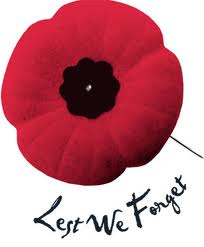 |
||||||||||||||||||||||||||||||||||||||||||||||||||||||||||||||||||||||||||||||||||||||||||||||||||||||||||||||||||||||||||||||||||||||||||||||||||||||||||||||||||||||||||||||||||||||||||||||||||||||||||||||||||||||||||||||||||||||||||||||||||||||||||||||
Sariwon, Apple Orchard, Broken Bridge, Pakchon, Salmon and Sardine, Kapyong, Minden, Commando 199, Kowang San 220, Baldy, Maryang San, The Hinge, The Apostles, Dog Outpost, 227, 210, 355, Blaze, Fauna, Buffalo, Songgok, The Bowling Alley, The Hook. |
||||||||||||||||||||||||||||||||||||||||||||||||||||||||||||||||||||||||||||||||||||||||||||||||||||||||||||||||||||||||||||||||||||||||||||||||||||||||||||||||||||||||||||||||||||||||||||||||||||||||||||||||||||||||||||||||||||||||||||||||||||||||||||||
The Korean War was overwhelmingly a land war, in terms of numbers of participants, casualties and material costs. It was fought across rugged terrain through which ran only rough, narrow roads and tracks. Operations were further complicated by extreme conditions of heat and cold, and rain and snow for long periods. The war was an exacting test of fitness of both men and equipment. Finally, the Korean War showed that the Australian soldier has lost none of the versatility, toughness and initiative which were the hallmark of his predecessors in the First AIF and the Second AIF. The Australian Army contingent in Korea was an all-volunteer force. When special enlistments were called for, men with combat experience in the 1939-45 War ensured that there was no shortage of applicants. They were motivated by a variety of factors: the challenge of combat: boredom or frustration with civilian life in Australia after demobilisation and a wider feeling of concern that the North Korean invasion, if it was not rebuffed, might be a harbinger of a direct threat to Australia's security. They fought hard, in appalling climatic conditions, against a determined enemy who showed that he could sometimes get the upper hand. Yet the Australians proved that, man-for-man and unit-for-unit they could acquit themselves on the battlefield better than most and they earned unstinted praise from their allies. Their record of bravery, of consideration for their wounded mates when in danger, of dash in the offensive and dogged persistence in defence such as that displayed at Kapyong, on Maryang San, (Buffalo, Blaze, The Hook) and in countless small patrol actions on the Jamestown line (the static war) - and their quick-witted, aggressive and subtle tactics, set the new, post-1939-45 War Army off to an excellent start. They enhanced Australia's reputation as an ally and helped to make the Commonwealth Division one of the most highly regarded formations of the entire army. But perhaps their greatest achievement was to develop the skill of patrolling to a fine art, of which they were undisputed masters. |
||||||||||||||||||||||||||||||||||||||||||||||||||||||||||||||||||||||||||||||||||||||||||||||||||||||||||||||||||||||||||||||||||||||||||||||||||||||||||||||||||||||||||||||||||||||||||||||||||||||||||||||||||||||||||||||||||||||||||||||||||||||||||||||
| Earlier in the morning I had been wounded in the fore part of my head (following a misguided Napalm strike). I must have looked a sight. I was sitting there, stunned and no doubt feeling a bit sick and sorry for myself. I then saw the most appalling apparition. A man with no flesh - his hands were dripping flesh - completely naked. As he walked, I saw these huge bloated feet. The sticks and the stones came up through his feet. He sat down next to me. I didn't know who he was. He looked at me and said, 'Jesus, Nugget, you're having a bad day'. 'Nugget' Dunque-stretcher-bearer |
||||||||||||||||||||||||||||||||||||||||||||||||||||||||||||||||||||||||||||||||||||||||||||||||||||||||||||||||||||||||||||||||||||||||||||||||||||||||||||||||||||||||||||||||||||||||||||||||||||||||||||||||||||||||||||||||||||||||||||||||||||||||||||||
| But Kapyong was not the only battle. Most of the soldiers who held the ridges at Kapyong were also there at the Apple Orchard and the Broken Bridge, at Chongju and Pakchon. They mounted rearguard in the Big Bug Out from Kunu-ri: stood
and fought on the snow covered hills; and were the last battalion remaining in the city of Seoul. The same frostbitten Diggers froze their tails off in the snow at Changhowan-ni and killed the prowling Chinese by the score during those frigidly cold nights on patrol at Ichon. These men climbed those unclimbable hills and fought the enemy inch by inch along the ridges at the Slippery Slide, at Sardine, and at Salmon, and then descended to the Kapyong Valley to establish their thin and attenuated line. For the Australians, I can find no words to express my admiration for what they have done. |
||||||||||||||||||||||||||||||||||||||||||||||||||||||||||||||||||||||||||||||||||||||||||||||||||||||||||||||||||||||||||||||||||||||||||||||||||||||||||||||||||||||||||||||||||||||||||||||||||||||||||||||||||||||||||||||||||||||||||||||||||||||||||||||
...the seriousness of the breakthrough on the central front had been changed from defeat to victory by the gallant stand of these heroic soldiers [who] displayed such gallantry, determination and esprit de corps in accomplishing their mission under extremely difficult and hazardous conditions as to set them apart and above other units participating in the campaign and by their achievements they brought distinguished credit on themselves, their homelands and all freedom-loving nations... If any factor stands out in 3 RAR's conduct at Kapyong it is the unfailing high morale which its members showed throughout the battle. It was difficult enough to fight off waves of attacks at night. It was yet more demanding to endure the following day in a relatively open position, exposed to the enemy on all sides, cut off from other battalions by several kilometres and under constant fire. The greatest test of morale was the final withdrawal which was carried out by exhausted men in considerable danger without giving in to depression, fear or panic of any kind. The Diggers won the Battle of Kapyong. There was nothing the Officers could do. It was a matter of whether the Diggers had the guts to go on with it or not. And they did. |
||||||||||||||||||||||||||||||||||||||||||||||||||||||||||||||||||||||||||||||||||||||||||||||||||||||||||||||||||||||||||||||||||||||||||||||||||||||||||||||||||||||||||||||||||||||||||||||||||||||||||||||||||||||||||||||||||||||||||||||||||||||||||||||
| In this action 3 RAR had won one of the most impressive victories achieved by any Australian battalion. In five days of heavy fighting 3 RAR dislodged a numerically superior enemy from a position of great strength ... The victory of Maryang San is probably the greatest single feat of the Australian Army during the Korean War. Robert O'Neill-Historian ...one of the finest battalion attacks in British History. Field Marshal Sir James Cassells-Korean veteran ...I have never been in a better-planned and executed operation than Commando, either before or since. It was faultless. Although many great men died or were wounded in those six days, it was a great success by a mighty battalion ... I was proud to be one of them. |
||||||||||||||||||||||||||||||||||||||||||||||||||||||||||||||||||||||||||||||||||||||||||||||||||||||||||||||||||||||||||||||||||||||||||||||||||||||||||||||||||||||||||||||||||||||||||||||||||||||||||||||||||||||||||||||||||||||||||||||||||||||||||||||
Blaze (1 RAR), Fauna (1 RAR), Songgok (1 and 3 RAR), Buffalo (3 RAR), patrols (RAR), The Hook (2 and 3 RAR). The battalions ... [1 RAR, 2 RAR and 3 RAR] ... then entered the early stages of the static war, which lasted for some two years. This was a hard monotonous period of trench warfare of a First World War nature. It was a life of patrolling and raids, wiring, mining and of being constantly shelled and mortared and fighting off local enemy attacks which persisted to the very end of hostilities in July 1953. There was a steady build-up of casualties. It was dangerous, onerous and lacked the excitement of significant achievement. I thought this a more exacting period, particularly for junior leaders, than the more mobile phase of the first year of the war. I too have memories of those far off days in Korea. I remember the dust, the heat, the enervating humidity, the bitter cold of winter when men slept with their boots on and weapons cradled lest they should be found frozen in an emergency, the soldiers on listening post, lying silently on the frozen ground trying desperately to remain alert, knowing they were responsible for the safety of their comrades. The sounds of battle in the valley below-units involved in life and death situations, awaiting news of success or failure and the inevitable cost... Little is remembered by the general public of Korea and its battles or of the immense esteem and respect in which the Allied Forces held the Australian troops and their Commanders. As a correspondent in Korea I attended a number of Allied operational briefings. The US Corps Commander, gutsy 'Mike' O'Daniel, under whom 1 Com Div served, 'proposed a spectacular raid' to bust the Chinese Line next to the Panmunjon truce talks zone to scare the Chinese to hasten a truce decision. 3 RAR was to take a leading role. GOC 1ComDiv, Major General Jim Cassells delegated exposition of the case to CO 3 RAR Frank Hassett who lucidly expounded the operation to C in C US General James Van Fleet at the crucial command conference. Hassett concluded: "We can go in, wreck the target area, take casualties and fight our way out. The front will still be where it is by political agreement." Van Fleet vetoed the raid and declared "If Lt Col Hassett would like to command a Corps he can have one of mine anytime." |
||||||||||||||||||||||||||||||||||||||||||||||||||||||||||||||||||||||||||||||||||||||||||||||||||||||||||||||||||||||||||||||||||||||||||||||||||||||||||||||||||||||||||||||||||||||||||||||||||||||||||||||||||||||||||||||||||||||||||||||||||||||||||||||
 |
||||||||||||||||||||||||||||||||||||||||||||||||||||||||||||||||||||||||||||||||||||||||||||||||||||||||||||||||||||||||||||||||||||||||||||||||||||||||||||||||||||||||||||||||||||||||||||||||||||||||||||||||||||||||||||||||||||||||||||||||||||||||||||||
| North Korea, October 1950. A wounded Australian machine-gunner is lowered from a wrecked bridge on the Taeryong River in the Pakchon area of North Korea. (AWM HOBJ1646) |
||||||||||||||||||||||||||||||||||||||||||||||||||||||||||||||||||||||||||||||||||||||||||||||||||||||||||||||||||||||||||||||||||||||||||||||||||||||||||||||||||||||||||||||||||||||||||||||||||||||||||||||||||||||||||||||||||||||||||||||||||||||||||||||
 |
||||||||||||||||||||||||||||||||||||||||||||||||||||||||||||||||||||||||||||||||||||||||||||||||||||||||||||||||||||||||||||||||||||||||||||||||||||||||||||||||||||||||||||||||||||||||||||||||||||||||||||||||||||||||||||||||||||||||||||||||||||||||||||||
 |
||||||||||||||||||||||||||||||||||||||||||||||||||||||||||||||||||||||||||||||||||||||||||||||||||||||||||||||||||||||||||||||||||||||||||||||||||||||||||||||||||||||||||||||||||||||||||||||||||||||||||||||||||||||||||||||||||||||||||||||||||||||||||||||
| The institution of this medal was approved in 1951. Struck in cupro-nickel and 36mm in diameter, it hangs by a straight fixed suspender from a yellow ribbon 33 mm wide with two 6.35 mm light blue stripes. As King George VI died before its issue, the obverse bears the laurated head of Queen Elizabeth II with the surrounding legend 'Elizabeth II Dei Gra: Britt: Omn: Regina F:D'. The reverse shows Hercules armed with a sword in his right hand holding off the Hydra with his left arm and leg. In the exergue is the word 'Korea'. Qualification for award to members of the 3rd Battalion was service of one day or longer on the posted strength of the Battalion. The naming is in small impressed block lettering. |
||||||||||||||||||||||||||||||||||||||||||||||||||||||||||||||||||||||||||||||||||||||||||||||||||||||||||||||||||||||||||||||||||||||||||||||||||||||||||||||||||||||||||||||||||||||||||||||||||||||||||||||||||||||||||||||||||||||||||||||||||||||||||||||
 |
||||||||||||||||||||||||||||||||||||||||||||||||||||||||||||||||||||||||||||||||||||||||||||||||||||||||||||||||||||||||||||||||||||||||||||||||||||||||||||||||||||||||||||||||||||||||||||||||||||||||||||||||||||||||||||||||||||||||||||||||||||||||||||||
| Those qualifying for the Korea Medal were also entitled to the United Nations medal for Korea. This bronze medal, 35.5 mm in diameter, hangs by a straight fixed suspender with a bar containing the word 'Korea'. The medal suspender and bar are all one piece and hang from a ribbon 37 mm wide and comprised of nine blue and eight white stripes. The obverse shows the world motif of the United Nations Organisation and the reverse bears the inscription 'For Service in the Defence of the Principles of the United Nations'. Naming is in small impressed block lettering, similar to the Korea Medal. |
||||||||||||||||||||||||||||||||||||||||||||||||||||||||||||||||||||||||||||||||||||||||||||||||||||||||||||||||||||||||||||||||||||||||||||||||||||||||||||||||||||||||||||||||||||||||||||||||||||||||||||||||||||||||||||||||||||||||||||||||||||||||||||||
 |
||||||||||||||||||||||||||||||||||||||||||||||||||||||||||||||||||||||||||||||||||||||||||||||||||||||||||||||||||||||||||||||||||||||||||||||||||||||||||||||||||||||||||||||||||||||||||||||||||||||||||||||||||||||||||||||||||||||||||||||||||||||||||||||
 |
| The 3 RAR Internet site gratefully acknowledges the assistance of 101 design of Wollongong. www.101design.com.au |